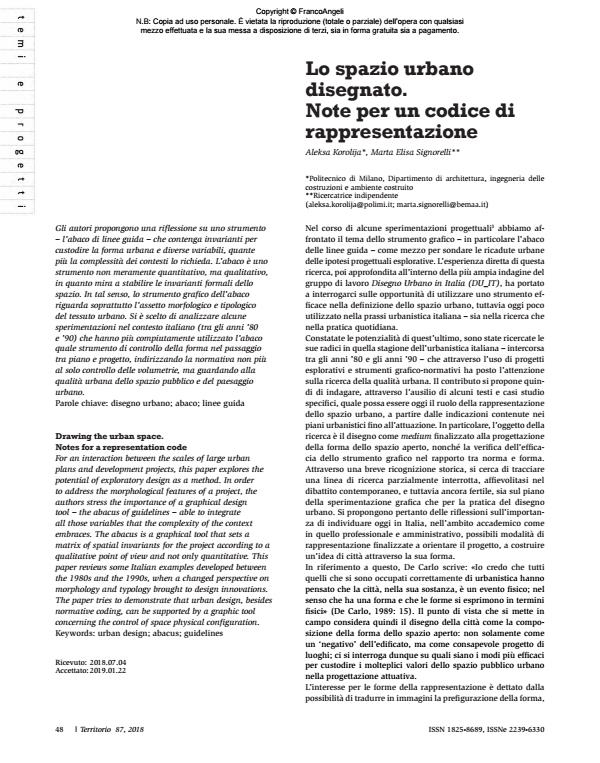Drawing the urban space. Notes for a representation code
Journal title TERRITORIO
Author/s Aleksa Korolija, Marta Elisa Signorelli
Publishing Year 2019 Issue 2018/87
Language Italian Pages 10 P. 48-57 File size 1367 KB
DOI 10.3280/TR2018-087009
DOI is like a bar code for intellectual property: to have more infomation
click here
Below, you can see the article first page
If you want to buy this article in PDF format, you can do it, following the instructions to buy download credits

FrancoAngeli is member of Publishers International Linking Association, Inc (PILA), a not-for-profit association which run the CrossRef service enabling links to and from online scholarly content.
For an interaction between the scales of large urban plans and development projects, this paper explores the potential of exploratory design as a method. In order to address the morphological features of a project, the authors stress the importance of a graphical design tool - the abacus of guidelines - able to integrate all those variables that the complexity of the context embraces. The abacus is a graphical tool that sets a matrix of spatial invariants for the project according to a qualitative point of view and not only quantitative. This paper reviews some Italian examples developed between the 1980s and the 1990s, when a changed perspective on morphology and typology brought to design innovations. The paper tries to demonstrate that urban design, besides normative coding, can be supported by a graphic tool concerning the control of space physical configuration.
Keywords: Urban design; abacus; guidelines
Aleksa Korolija, Marta Elisa Signorelli, Lo spazio urbano disegnato. Note per un codice di rappresentazione in "TERRITORIO" 87/2018, pp 48-57, DOI: 10.3280/TR2018-087009